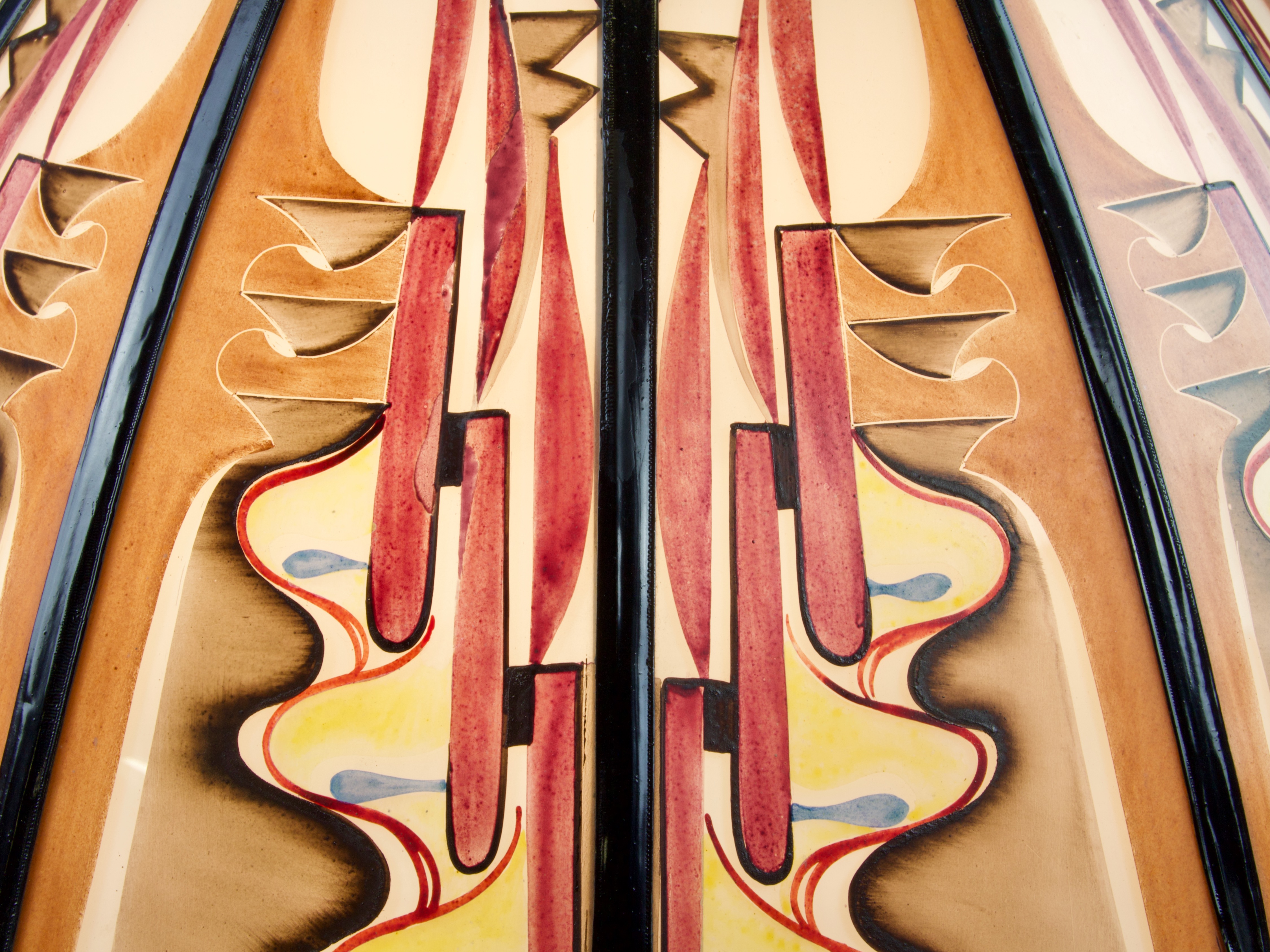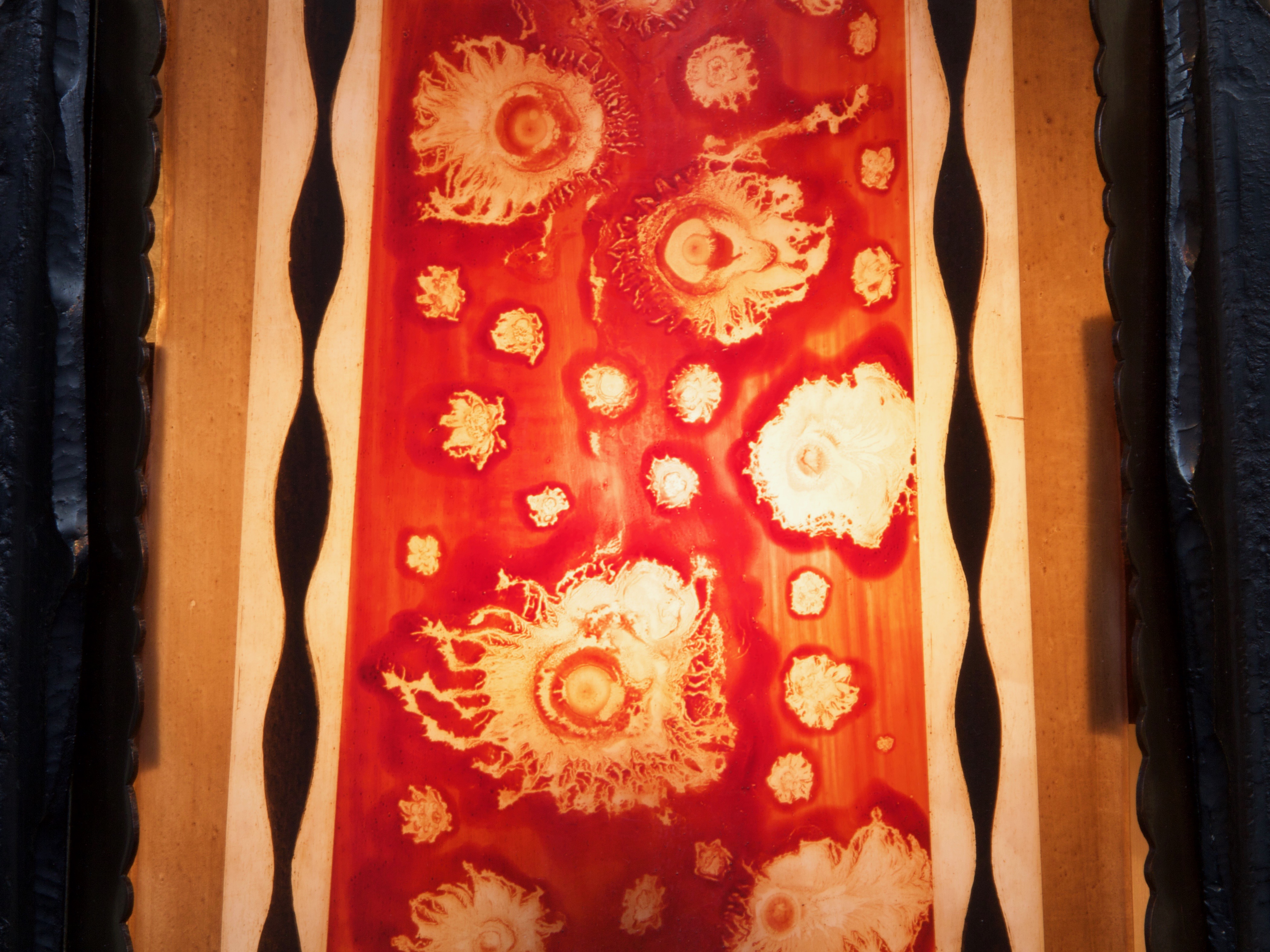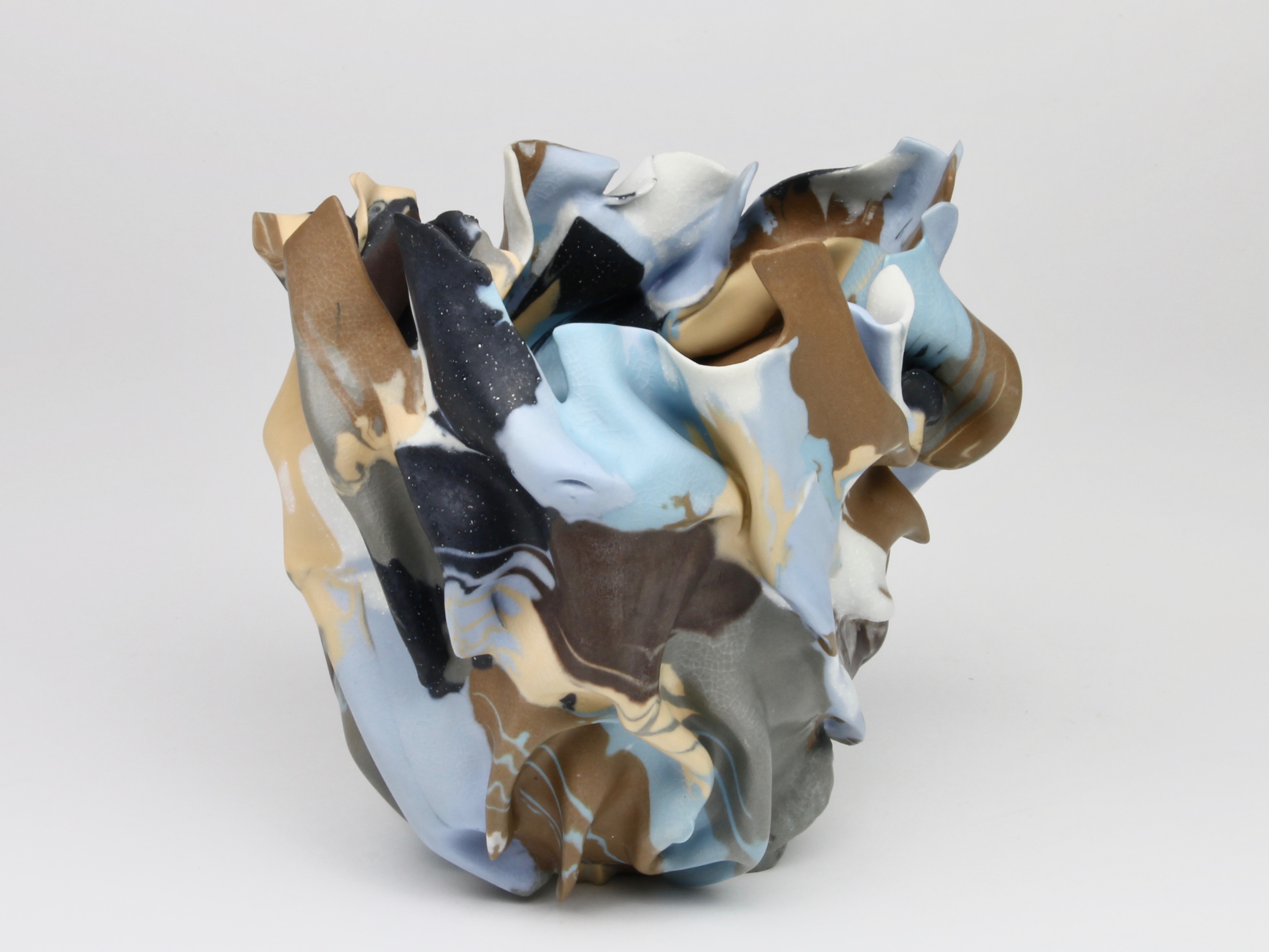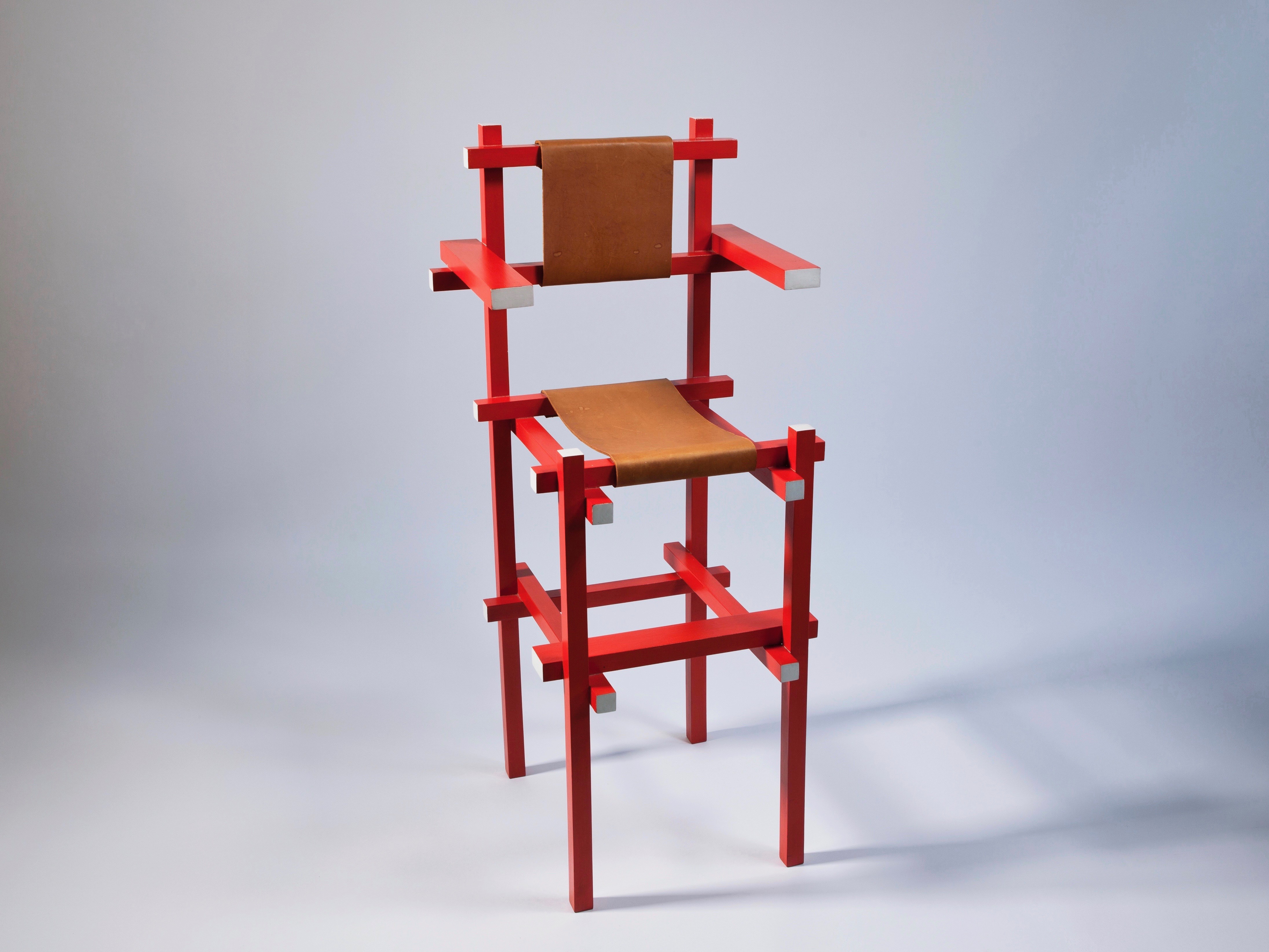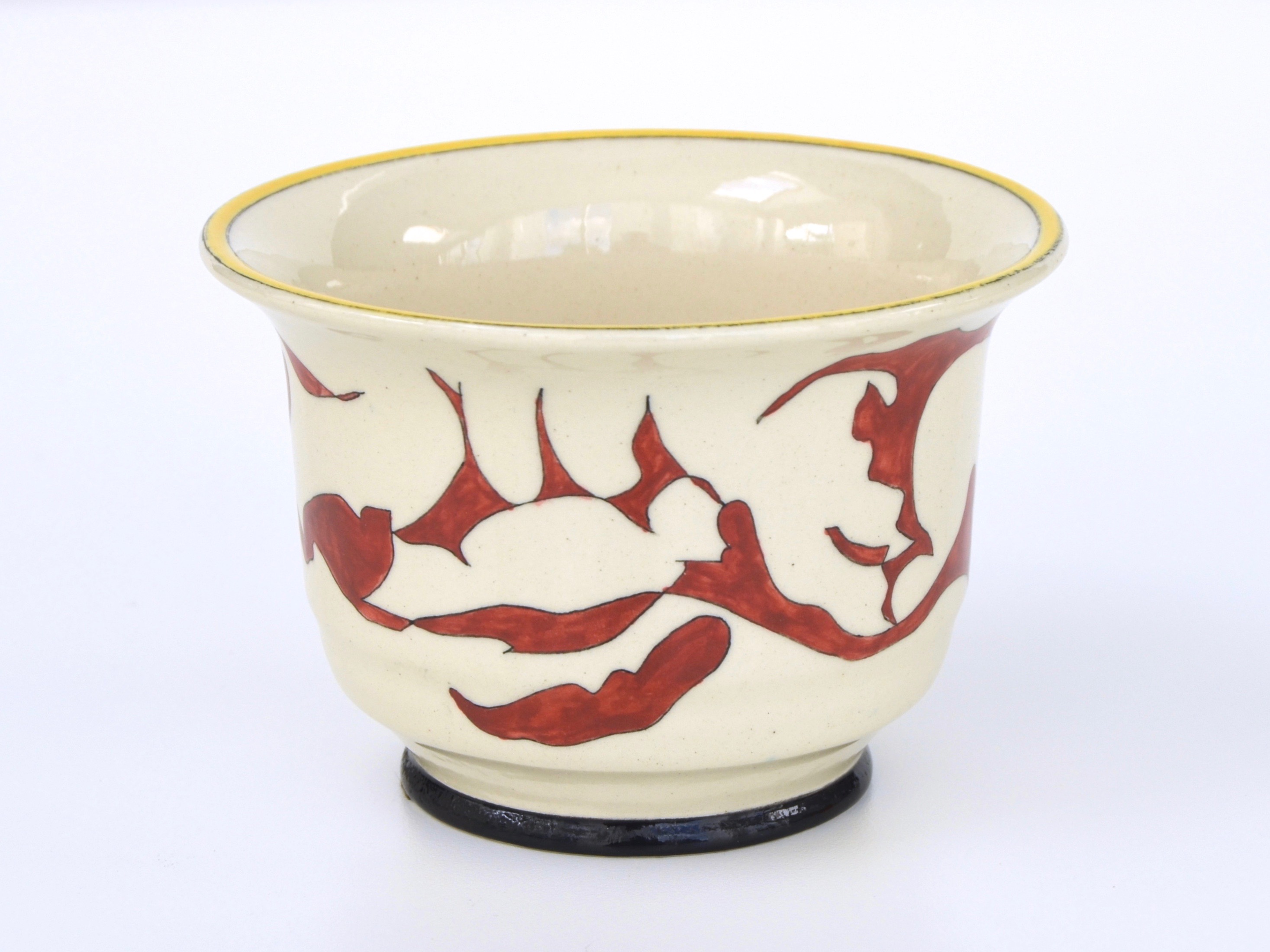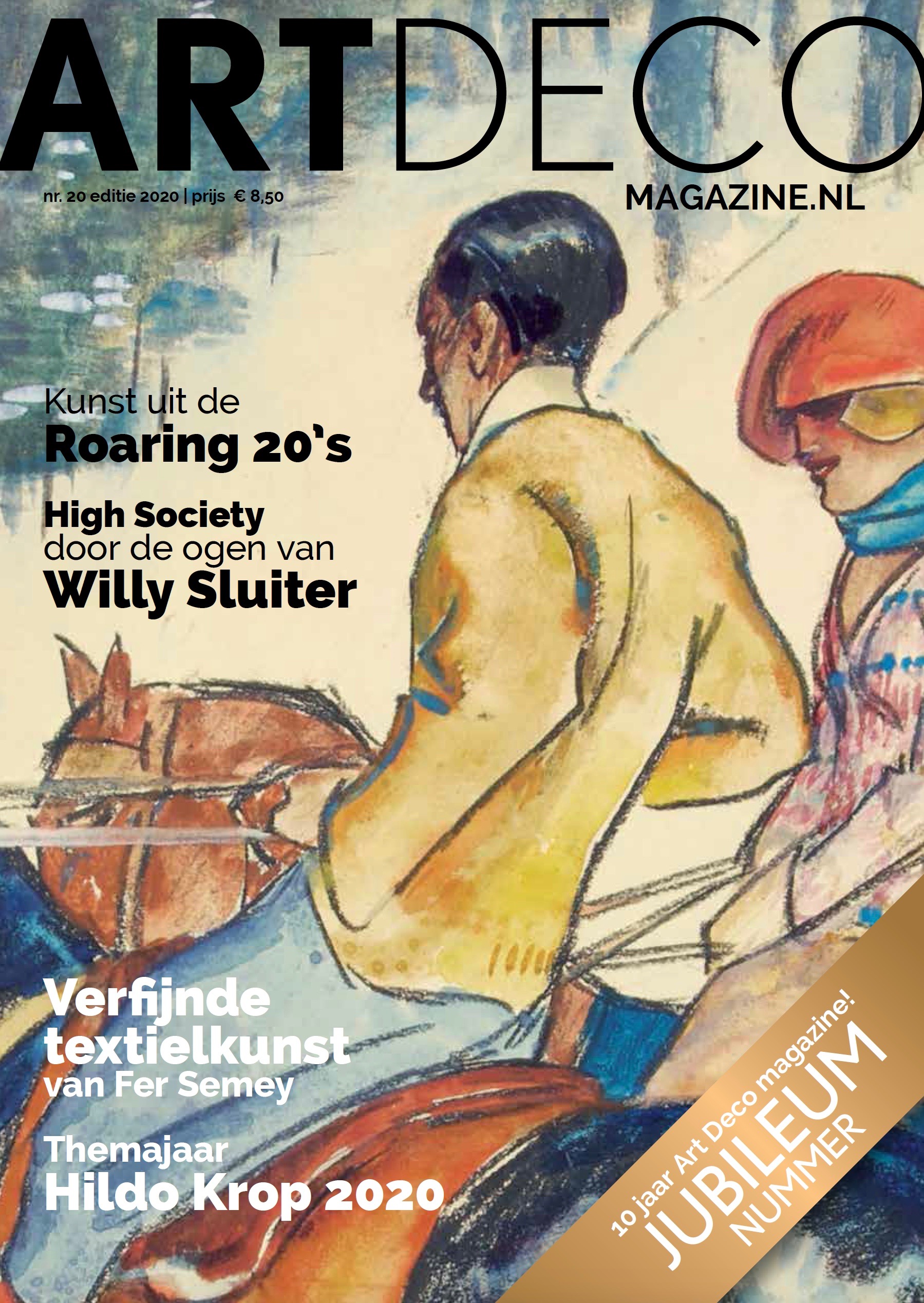Glass workshop De Nieuwe Honsel: ‘Like in a fairytale’
Marthe Kes conducted research on the customers of glass workshop De Nieuwe Honsel and creates an image of the luxurious atmosphere the lamps must have given to exclusive Dutch places of entertainment.
The style of the Amsterdam School has spread in the Netherlands by means of, among other things, stained glass windows and lamps of which a relatively large number has been saved. A glass workshop which had an important share in this was De (Nieuwe) Honsel. The firm was established in 1919 as “De Honsel” Workshops for artistically stained glass by H.C. Herens and P.G. van Cranenburgh in Honselersdijk, a small village in the Westland. The seventeenth century hunting lodge of Prince Frederik of Orange used to be in this village. Through the centuries House Honselersdijk got neglected and sold for demolition in 1841. The former stables remained. Here, Herens and Van Cranenburgh started to stain glass.
Restart
The company grew fast and therefore moved several times to bigger workshops within the region. In 1924 the name got changed into “De Nieuwe Honsel” Manufacturer of lighting ornaments of stained glass, shortly after the workshop was established in The Hague and had restarted after bankruptcy. Different than most glass workshops that were active in the 1920s (of which most of them were in the region of The Hague), De Nieuwe Honsel focused on manufacturing lamps. Windows were designed and manufactured only a few times. In 1928 the firm was taken over by Heybroek’s Groothandel and moved to the workshop in Haarlem. Designs by De Nieuwe Honsel were executed here until approximately 1935. (From now on we will name the company De Nieuwe Honsel in this article.)
Lasting aesthetic value
From old newspapers, it seemed that the company wanted to create brand awareness and tried to reach customers with advertisements in newspaper Het Vaderland. Three different advertisements appeared in 1923. They praised the quality of the stained glass by De Nieuwe Honsel and considered them better than silk lampshades. For example, the first advertisement, that was in the newspaper for a week, stated that “Stained glass always (seems) to be the designated material for lighting ornaments. (..) Our method makes it possible to create and execute limitless options regarding form and colour.” The next advertisement called silk lampshades “A Fancy-article, that gets dirty, discolours and bores and for which (De Nieuwe Honsel) has an alternative of everlasting material and of LASTING aesthetic value. Silk lampshades are outdated.” The third advertisement was published no less than twelve times in Het Vaderland and was a direct call to potential customers: “Those, who are at the head of companies, where decorative lighting is urgent, have instantly seen the value of our fabricate.” These kinds of companies were often hotels, theaters, cinemas and cafés. These establishments invested in exclusive lamps to give their business a nice atmosphere and luxurious appearance.
Creators of ambience
We know the lamps of De Nieuwe Honsel were used to create ambience in cafés, restaurants and hotels because of another advertisement the workshop published in the paper Het Vaderland. This advertisement not only shows what kind of companies De Nieuwe Honsel manufactured lamps for, but also gives an insight in their distribution. Names that could be mentioned according to De Nieuwe Honsel were Theater Tuschinski in Amsterdam, Hotel-restaurant Terminus in Utrecht and The Hague and In den Vergulden Turk in Leiden. The latter café-restaurant was opened in 1900 on the Breestraat in Leiden. After two decades the interior could use a renovation and in 1920 “De Turk” ordered several wall lamps at De Nieuwe Honsel, such as three lanterns and a small wall lamp. In the 1930s and 40s the building got renovated again and in 1962 it became a part of the department store Vroom & Dreesmann. After that the pre-war interior was completely gone.
‘enchanting atmosphere of a mysterious glow’
Not only the advertisements, but also newspaper articles about the newly opened cafés, hotels and theaters offers information about the customers of the glass workshop. An example is the Cabaret dansant La Gaîté that was opened in 1924 in the Grand Theater of Tuschinski on the Pompenburgsingel in Rotterdam. As with Theater Tuschinski in Amsterdam Pieter den Besten was responsible for the interior decoration. In the Rotterdamsch Nieuwsblad appeared an article about the opening of La Gaîté on the 25th of December in 1924. According to the editors ‘the crowd in the cabaret was immediately captivated by the ingenious stage settings’. De Nieuwe Honsel was responsible for the large ceiling lamp in the middle of the theater hall, that was described lively in the following citation:
‘The magician named Tuschinski created brightly coloured but at the same time gentle lighting with a lamp in the middle, rich and fantastic like in a fairytale. Like a miraculous flower of beaming burning colours the lamp sits there in the heart of the theater hall, enlightened from all angles by other lamps, simpler, but still glowing very lively, the lamp filled the theater hall with an enchanting atmosphere of a mysterious glow.” Only this review can still create an image of the wonderful effect this De Nieuwe Honsel lamp must have had. La Gaîté was completely destroyed during the bombings of the Second World War in 1940.
Theatrical lights for in the cinema
In 1924 Hotel Central opened in Rotterdam. The new building was described extensively in the Nieuwe Rotterdamsche Courant on the 9th of March 1926. The café had “gotten a large reading table and a cosy seating area for drinking coffee, livened up by the stained-glass lamps of de Honsel.”
Besides cafés and restaurants, cinemas were important customers as well. As mentioned earlier, De Nieuwe Honsel delivered lamps to Theater Tuschinski in Amsterdam. The firm also designed several kinds of lamps for a cinema in Nijmegen in the beginning of the 1920s. An article about the renovation of the Groningen based cinema is published in the Nieuwsblad van het Noorden of 9 april 1926. According to the newspaper, a female artist from The Hague, Miss Rüdeman, “boldly” designed wall paintings with a neo-Russian character. The whimsical character of Rüdeman’s paintings would have matched greatly with the theatrical, colourful decorations of the lamps made by De Nieuwe Honsel. According to the newspaper the whole was ‘held together by the tempered light’. Next to lighting ornaments the firm also provided the cinema in Groningen with stained glass windows.
Heck’s lunchroom
As mentioned earlier, De Nieuwe Honsel mainly focused on the production of lamps, but sometimes they also produced stained glass windows. As far as we know there is a photo of only one of these windows. This stained-glass window with a representation of a jumping deer was made in 1927 for Heck’s lunchroom at the Spui in The Hague.
For a long time, Heck’s lunchroom was a well-known name. Going out for dinner was combined with live bands and entertainment. The first Heck’s lunchroom was opened at the Stationsweg in Leiden in 1923. Within ten years, Heck’s opened several locations in Amsterdam, Rotterdam, The Hague, Utrecht, Arnhem, Nijmegen, Breda, Amersfoort and Hilversum. In total, nearly thirty locations were opened. With the rise of television, people went out less for entertainment, which meant the end of Heck’s lunchroom: in the 1960s the locations closed one by one. Heck’s lunchroom in The Hague also closed and the building was thoroughly renovated in the years thereafter. It is unknown what happened to the stained-glass window during this renovation.
The history of In den Vergulde Turk, La Gaîté and Heck’s Lunchroom shows that cafés, restaurants and theaters were renovated frequently or renewed their interiors. Therefore, it’s difficult to trace back elements from these interiors. There are also just a few photos of these interiors available. Luckily, the descriptions from newspapers and the lamps that did stand the test of time give us a representation of the spectacular light the stained glass lamps of De Nieuwe Honsel must have given to the cafés, hotels and theaters.
Private buyers
Not only did De Nieuwe Honsel supply to public places, but to the private market as well. “Anywhere, where attractive yet economic lighting is desired – in hotels, restaurants, theaters, shops, private homes, gardens, terraces – our ornaments are preferred”, states one of the advertisements in Het Vaderland from 1923. Quite a number of private buyers found their way to De Nieuwe Honsel and bought stained glass windows to adorn their homes.
Next to unique designs, De Nieuwe Honsel also provided standard models. During the 1920s several catalogues were published in which a permanent collection was offered. This included lamps with a simpler design that lended themselves for serial production. The models differed in type, material, decoration and price. For 20 guilders one could purchase a table lamp, but the costs of a big hanging lamp could rise to 150 guilders. The commercial character of the firm and the broad collection they put on the market eventually made sure that collectors and admirers can still enjoy the colourful, sparkling glow of the lighting ornaments of De Nieuwe Honsel.
Click here for lamps of the De Nieuwe Honsel that are in the collection of Kunstconsult.
Text: Marthe Kes
Photos: Noortje Remmerswaal
© Kunstconsult – 20th century art | objects
Reproduction and distribution of this text is only allowed with correct reference.

